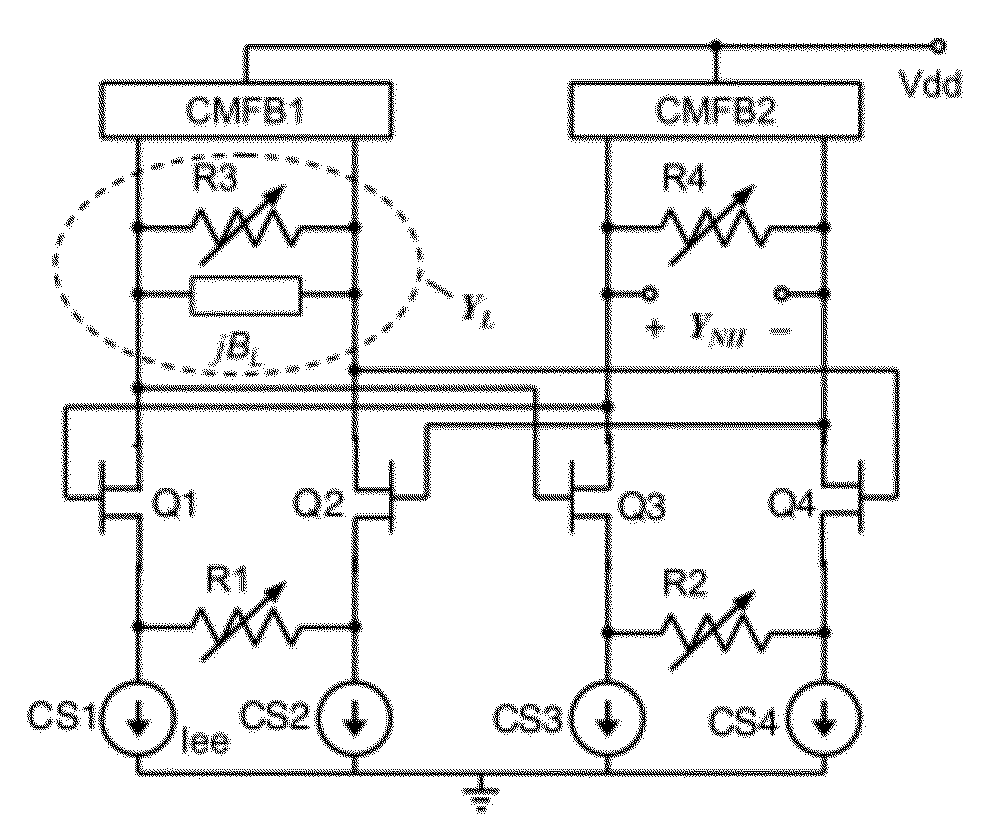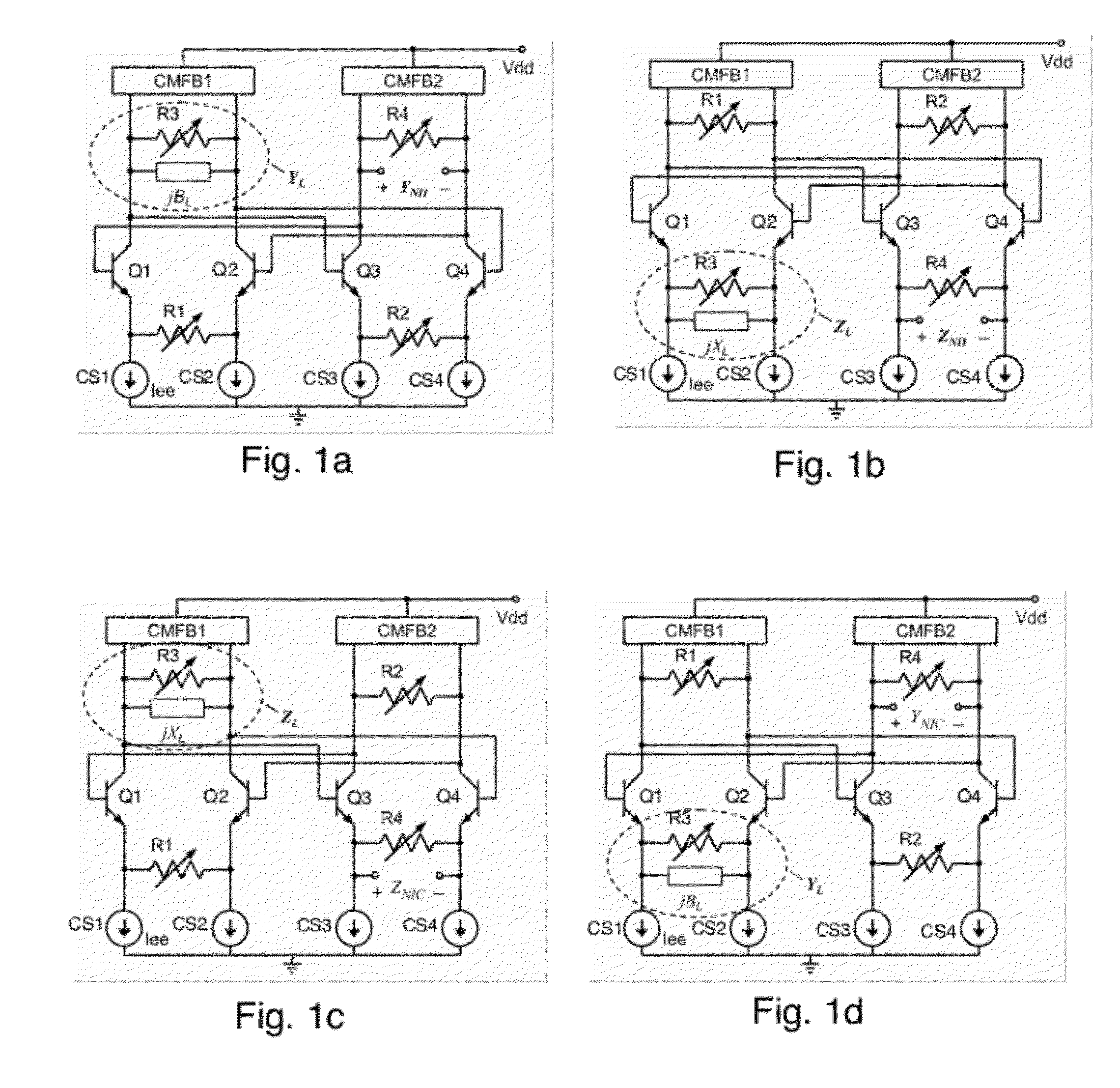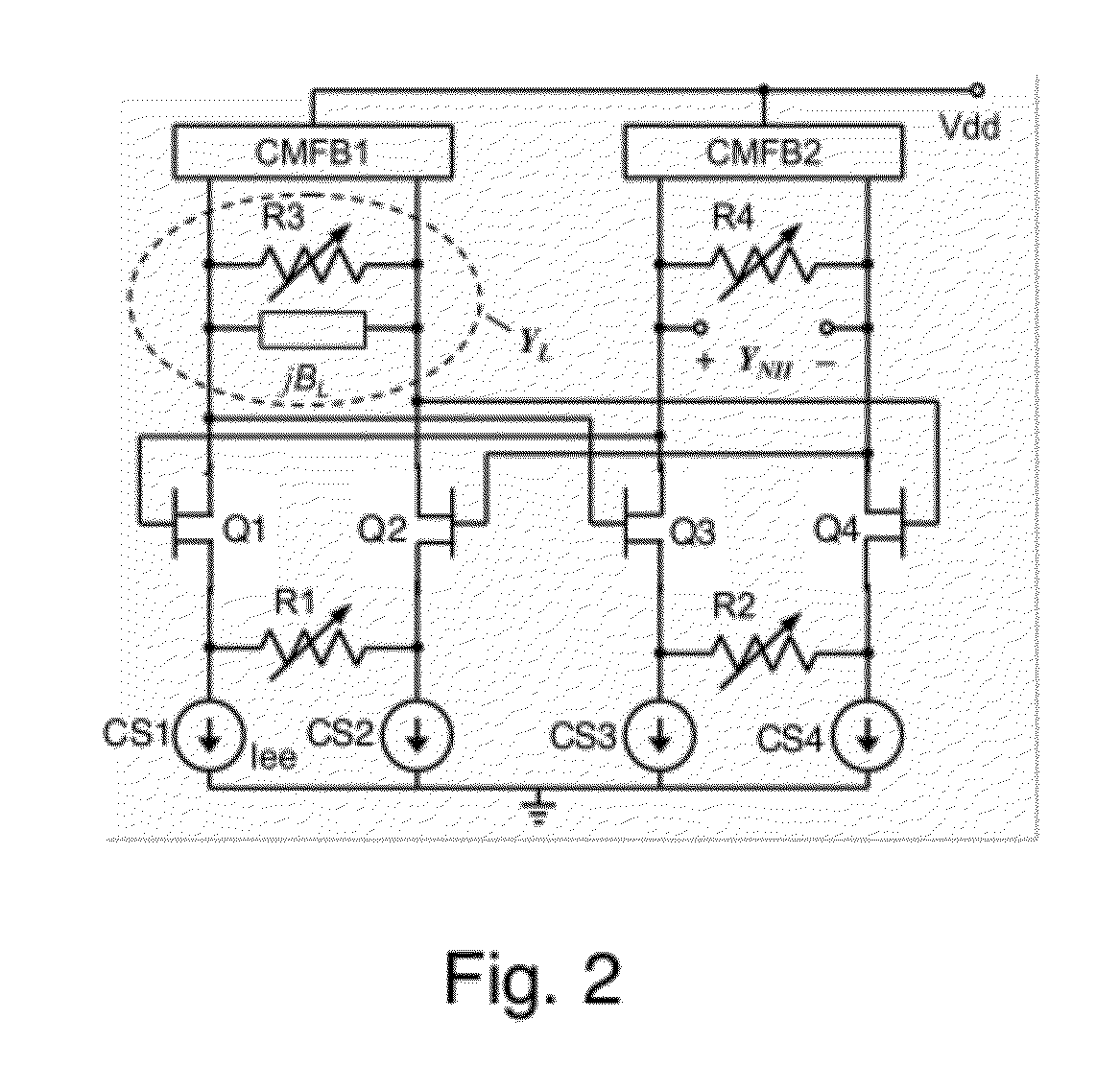Differential negative impedance converters and inverters with variable or tunable conversion ratios
a converter and negative impedance technology, applied in the field ofdifferential circuit topology, can solve the problems of limited bandwidth of two applications, small stability margin, and few successful attempts to realize the effect of improving the performance of two applications, and achieve the effect of reducing parasitics and good device matching
- Summary
- Abstract
- Description
- Claims
- Application Information
AI Technical Summary
Benefits of technology
Problems solved by technology
Method used
Image
Examples
Embodiment Construction
[0017]A differential circuit topology can produce a tunable floating negative inductance, negative capacitance, negative resistance / conductance, or a combination of the three. Circuits which generate negative capacitance, inductance and / or resistance are commonly referred to as “non-Foster circuits” because they violate Foster's reactance theorem for passive lossless 1-port circuits, which says that the reactance and susceptance must increase with frequency.
[0018]The circuits is shown in FIGS. 1a-1d each comprises two differential pairs of transistors (Q1, Q2 and Q3, Q4; bipolar transistors are shown, but FETs may be used instead if desired) that are cross-coupled, a load immittance (YL or ZL) connected across one differential pair, four current sources (CS1-CS4), two Common-Mode FeedBack networks (CMFB1 and CMFB2), four tunable (variable) resistors (R1-R4) connected across the differential pairs, and two terminals across which the desired immittance is present (YNII in FIGS. 1a and...
PUM
 Login to View More
Login to View More Abstract
Description
Claims
Application Information
 Login to View More
Login to View More - R&D
- Intellectual Property
- Life Sciences
- Materials
- Tech Scout
- Unparalleled Data Quality
- Higher Quality Content
- 60% Fewer Hallucinations
Browse by: Latest US Patents, China's latest patents, Technical Efficacy Thesaurus, Application Domain, Technology Topic, Popular Technical Reports.
© 2025 PatSnap. All rights reserved.Legal|Privacy policy|Modern Slavery Act Transparency Statement|Sitemap|About US| Contact US: help@patsnap.com



